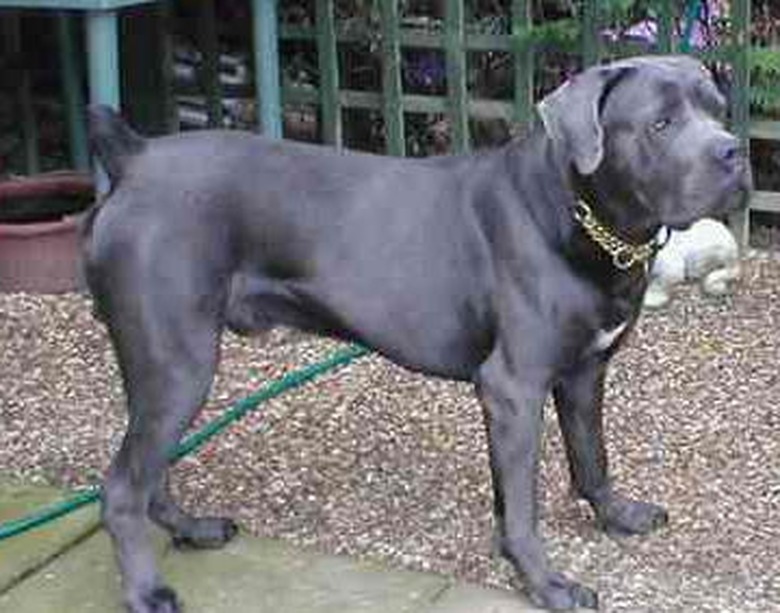How To Identify A Cane Corso Dog
Warning
This breed has a tendency toward dominating family members and other animals it lives with. It is important to exert one's own dominance to firmly let the dog know who is in charge. Unless this is done, the dog will ignore any commands it is given. Because of this specie's size and strength, full obedience training is recommended. Do not attempt to use an invisible fence or shock collar with this dog. Their pain tolerance is so high that often they won't even realize they've been shocked. The pain simply goes unnoticed.
Tip
This breed is extremely intelligent and can be trained without much difficulty. They are gentle with children and very loyal to their family. This is not a species that wanders off on its own, nor one that will pick a fight with other dogs. It is not at all submissive though, meaning if it is approached or threatened by another dog it will not by any means back down from defending itself or its family. Unlike the majority of other dogs kept as watchdogs and protectors, the Cane Corso has a very stable personality regardless of the situation it finds itself in. The Cane Corso has high exercise needs and should be taken for longs walks twice a day.
The Cane Corso Italiano is also known as the Italian Mastiff. This is a large and very old breed which is descended from the farm dogs kept by the ancient Romans. Many people think this breed is descended from the Canis Pugnix, the species of dog that ancient Romans bred for warfare, suggesting that the Cane Corso has a tendency toward violent behavior. This is incorrect. The ancestors of the Cane Corso were not allowed to interbreed with the Canis Pugnix as they did not wish the bloodlines to be watered down. The Corso was meant to be a watchdog, protector of the farm, companion and sometimes a beast of burden.
Step 1
Begin by guessing the dog's weight, size and general features. The dog should be no more than 27 inches high at the shoulder and weigh roughly 100 pounds. The dog should be very muscular and have thick skin, but no apparent fat. The tail should be a stump a few inches long. It should have a barrel chest that extends down to the elbows of the forelegs. The rear legs should be significantly longer than the forelegs, making the dog's back seem slumped by comparison.
Step 2
Examine the dog's fur. It should be a sleek fuzz ranging from ¾ of an inch to ¼ of an inch depending on the portion of the body. Acceptable colors include black, red, gray-blue and tan. These colors may or may not have a brindled pattern to them. Also a Cane Corso may occasionally have small white markings on the chest and toes.
Step 3
Look at the dog's head. It should be very distinctive given its great size. The dog's neck should be oval shaped in cross-section, long and very muscular. Its skull should be very wide and rounded at the top, with ears either docked or flopping to the sides. The muzzle should be as wide as it is long; making it appeared box shaped and very powerful. The holes of the nostrils should be very prominent and large, with the top of the muzzle being completely flat from the tip of the nose back to the bridge between the eyes. The dog's lips should be thick and slab-like, though not drooping at all. If the dog matches this description then it's a Cane Corso Italiano.
